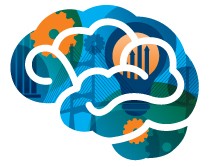Demonstrating the Diversity and Unity of Life Through Phylogenetics / Presenter: Molly Nyren
Faculty Mentors: Ryan Sessions, Professor of Biological Science at Florida State College at Jacksonville
Abstract: Since the discovery of the secondary structure of DNA by Watson and Crick, biology has become increasingly molecular. On a microscopic level, animals look the same; the cell structure is the same. Even when compared to plants, microscopically animals do not look that different. However, the diversity is endless. The similar features between flowers and leopards are virtually invisible; even the similarities between leopards, a mammal, and lizards, a reptile, to the naked eye are also virtually invisible. However, through the use of morphological phylogenetic trees as well as phylogenetic trees generated through Cytochrome C sequences show that organisms are not so different. Morphological trees are created using the structural features of different species’ and comparing them, and trees produced through Cytochrome C sequences compare the actual genetic similarities and differences in species. Morphological features are anything from an organism’s outward appearance, like its colors, to the internal parts like the bones and skeletal shape. Cytochrome C is a protein found in all types of eukaryotes and is involved in cellular respiration. The amino acid sequence for Cytochrome C varies depending on the species, but the overall evolution and structure of Cytochrome C remains constant, thus is a good protein to measure genetic differences and similarities. This paper will describe methods for searching bioinformatics databases such as BLAST and GenBank. The paper will also take a comparative look at the two techniques used to build phylogenetic trees. Phylogenetic trees place organisms into their evolutionary context and reveal common ancestry amongst organisms. Data matrices will be built based upon morphological traits as well as homologous DNA sequences to:
- Show how phylogenetic trees are constructed
- Examine the relationships between organisms
- To test hypotheses
